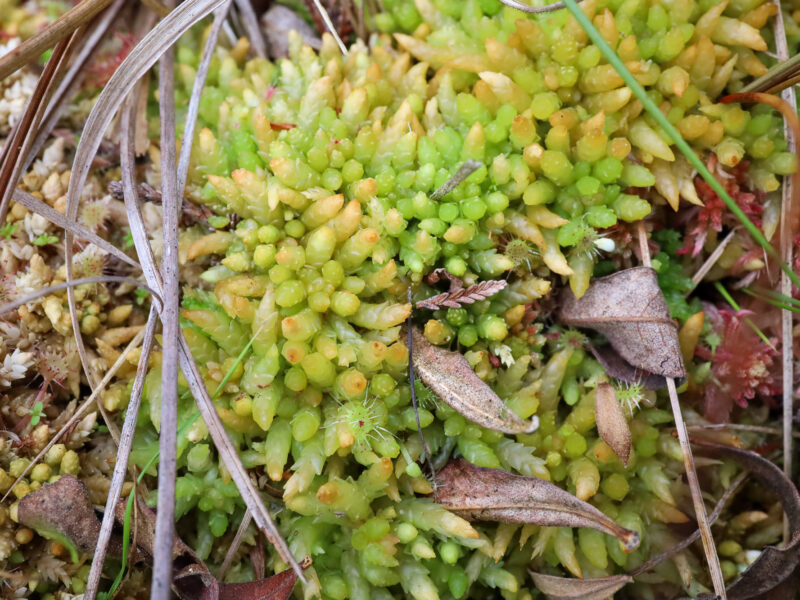Identification notes
S. papillosum is the commonest of the peat-forming bog-mosses and, when well-grown, is not difficult to recognise. Then it forms relatively firm compact hummocks and is usually quite richly coloured, with warm orange-brown tints which are well-developed in the mid-stem branches. In drier areas, it’s often quite rare, and is an indicator of good quality valley mire on deep peat (for example in the NVC’s M21 valley mire community). In ‘edge’ habitats such as seepage lines, poor fen, wet woodland or ditches it is usually replaced by the ubiquitous (and non-peat forming) S. palustre. In the north and west, S. papillosum is commonly found in moorland, blanket bog, flushed ground and of course raised bogs.
Generally, S. papillosum has short, blunt-ended spreading branches but sometimes you’ll encounter plants that look more like S. palustre, with more tapering branches. Then, you’ll probably need to check some leaves at high magnification to confirm the presence of the numerous but minute papillae that S. papillosum has on its cell walls. You’ll need a good microscope with a magnification of around x 400 to see these but they are definitive.
Read the Field Guide account














